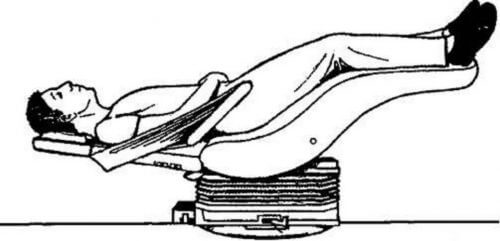How to Wake Up Your Vagus Nerve for Better Health


Written and verified by psychologist Valeria Sabater
Human beings have twelve pairs of nerves that begin in the brain. Among these nerves, the tenth is definitely the most interesting and powerful: it’s called the vagus nerve.
This nerve makes up a part of the parasympathetic nervous system and it has a very interesting job. It is the one that helps you relax, achieve a state of peace, fight stress and anxiety, and enjoy an overall better feeling of well-being.
Unfortunately, not everyone is aware of how important this nerve is in your body.
It’s easy to see why: people are more focused on external stimuli than on patiently and intuitively listening to their own bodies.
Below, we’ll suggest that you take a half hour for yourself. Shortly, you’ll learn how to “wake up” your vagus nerve and get a better quality of life.
If you put this into practice in your daily life, you’ll definitely notice changes.
Are you ready?
Where the Vagus Nerve is Located

The vagus nerve, previously called the pneumogastric nerve, starts in the medulla oblongata in your neck and then begins its long and fascinating journey through the:
- Pharynx
- Esophagus
- Larynx
- Bronchial tubes
- Heart
- Stomach
- Pancreas
- Liver
It also makes its way through different arteries and motor fibers.
You could call it a long-distance highway that crosses over the front of your body while doing the following jobs:
- Gives you sensitivity.
- Stimulates your vocal cavity muscles and helps with communication.
- Regulates your breathing.
- Stimulates the production of oxytocin (the love or maternal bonding hormone).
- Regulates liver and pancreas function.
- It even stops your hiccups!
The Vagus Nerve, a Nerve for Overall Health

Here’s something we all experience on a daily basis: you finish eating a big meal and feel a creeping tiredness, like a sleepiness that makes you want to lay on the couch or take a little nap.
This feeling is regulated by the vagus nerve. After eating, your body uses a lot of energy to digest your food. This nerve prompts you with a series of stimuli to encourage relaxation, resulting in this classic drowsiness. Along with regulating digestion, this nerve watches out for your heart to make sure it doesn’t get too excited.
It also regulates your immune system and cellular regeneration.
Another function of this fascinating nerve is that it makes you feel full. Since it’s intimately related to the digestive system, it acts as a regulator. The vagus nerve is what tells you that you’ve had enough and controls your appetite when you’re stressed.
As you can see, this nerve helps in a lot of areas. That’s why taking care of it can really help to contribute to your overall health.
Find out: How Yoga Changed the Posture and Life of an 87-Year-Old Woman
A Technique for Activating Your Vagus Nerve

This is a simple technique that won’t take up much more than a half hour of your time. However, it must be practiced daily and always at the same time of day.
You’ll see that it looks a lot like any other mindfulness technique for relaxation, where the key is always some type of controlled breathing.
Let’s see what we have to do:
- Put on comfortable, loose clothing.
- Lay down on an inclined surface with your head lower than your feet (the Trendelenburg position).
- Put a cool, moist cloth on your forehead.
- Breathe in through your nose for 6 seconds, filling the lower part of your belly with air (abdominal breathing).
- Hold the air in for 6 seconds while you contract your abdomen as if someone were about to hit you.
- Now, exhale deeply for 7 seconds, inflating your belly while at the same time pursing your lips as if you were blowing out a candle (this is the best way to oxygenate and activate your vagus nerve).
- Repeat the exercise 7 times.
- To end, very gradually sit up and wait 5 minutes before you stand up. Relax.
- Once you’re up, it’s a good idea to have a glass of cool water.
Find out: 6 Relaxation Exercises to Sleep Peacefully
As you’ve just seen, it’s a simple exercise to wake up the vagus nerve. It really is just about breathing in a way that will reactivate a vital bodily function.
All cited sources were thoroughly reviewed by our team to ensure their quality, reliability, currency, and validity. The bibliography of this article was considered reliable and of academic or scientific accuracy.
- Piñeiro, D. (2012). La estimulación del nervio vago aumenta el tamaño del infarto de miocardio en un modelo experimental : ¿ paradoja u oportunidad ? REVISTA ARGENTINA DE CARDIOLOGÍA.
- Rodríguez-Bustabad, M. T., Pérez-García, E., Ysa-Figueras, A. Y., Bardón-Valcarce, F., Vela-Orus, P., Del Campo-Garrido, A., & García-Alonso, J. A. (2006). Paraganglioma de nervio vago. Angiologia. https://doi.org/10.1016/S0003-3170(06)74963-X
- Rodríguez, C. M., Naranjo, S., & Carbajo, M. (2015). Schwannoma intratorácico del nervio vago. Archivos de Bronconeumologia. https://doi.org/10.1016/j.arbres.2014.06.015
- Mosqueira, A. J., López-Manzanares, L., Canneti Heredia, B., Barroso, A., García-Navarrete, E., Valdivia, A., & Vivancos, J. (2013). Estimulación del nervio vago en pacientes migrañosos. Revista de Neurologia.
This text is provided for informational purposes only and does not replace consultation with a professional. If in doubt, consult your specialist.








